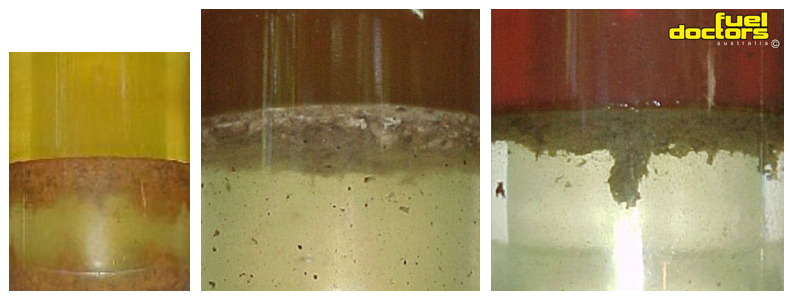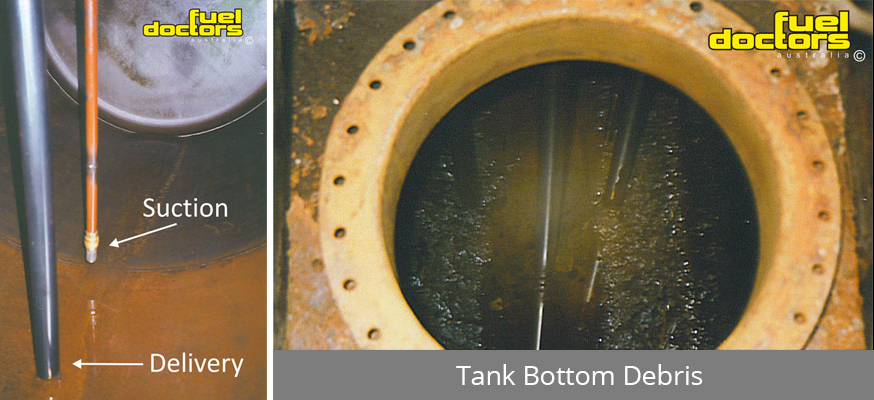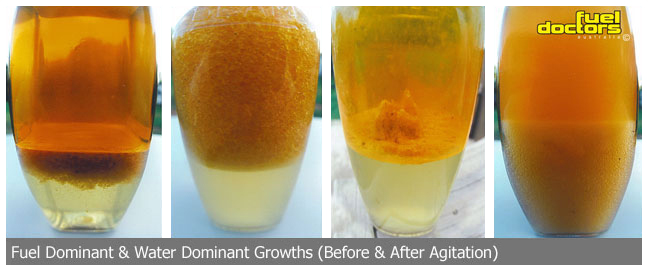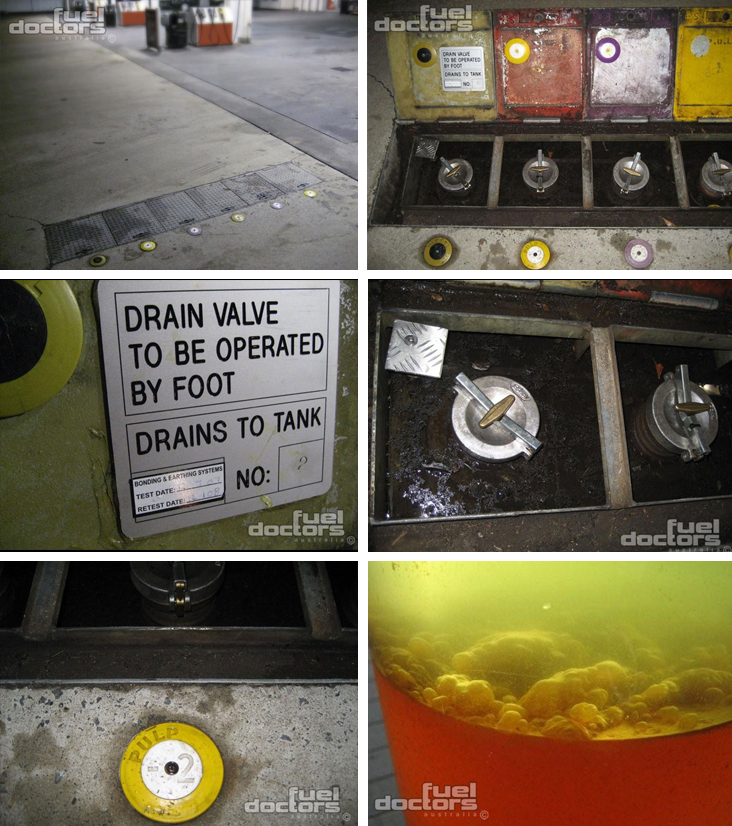How does fuel become contaminated / dirty ?

Fuel is a man made product derived from organic deposits. Every oil field presents a unique chemical signature reflecting the origin of that particular field.

Occasionally you will be the recipient of contaminated/dirty fuel. It could be a consequence of poor managment by you or others.
There is always a nominal amount of water in your fuel (Australian fuel standard determination 2001 = 0.05% by volume). This amount of water will not impact fuel system operation. However, if you are a boat owner you need to be vigilant in the control of delivered water and condensation as lives could depend on it if caught in adverse weather conditions.

Delivered water is a consequence of poor management and is difficult for you to control unless you sample prior to bunkering.
In a boat, fuel tanks are prone to condensation from the atmosphere.
Airborne spores are in every cc of air. Different types of spores require different conditions to germinate. A group of these spores will only germinate when presented with hydrocarbons at a water interface. The air space in a tank, known as the ullage, expands during the day and exits the tank, with the reverse occurring in the evening. If you like, the tank breathes.
The spores settle on the surface where they remain dormant. Fuel movement within the tank washes the condensation off the sides of the tank to the bottom (fuel 740-840 grams per litre, water 1000 grams) mixing in the spores in the process. Dissolved oxygen in the water acts as a trigger for germination and heat accelerates the germination and growth process. Boats in the tropics or running American engines (returning greater volumes of heated fuel back to the tank) will experience more rapid infestation than those from more temperate climates. However, spores are diverse and adaptive – some will germinate at 4 degrees celsius, maintaining their growth cycle at these low temperatures.
Free water, delivered with fuel, may present a higher spore count due to the greater number of waterborne soil spores that invariably find their way into underground tanks. Either airborne or waterborne spore growths can cause many thousands of dollars damage to pumps and injectors in a relatively short time frame.

Microbial material will present in many forms and colours and will catalyse and maintain emulsions over varying time scales. For more specific information, contact us

Sulphur and aromatics in modern fuel have been greatly reduced due to environmental concerns. These elements used to maximise pump and injector lubrication and assisted with the stability of stored fuel. The old adage of keeping tanks fully pressed (especially petrol) combined with minimal use could see your octane or cetane challenged a lot earlier than you thought. Stale fuel breaks down rapidly.
Australian fuel is quality assured from refinery to the load-out terminal. On delivery to the storage tank, quality assurance becomes the responsibility of the site operator. Fuel Doctors’ experience shows that most operators are unaware of quality issues until they are brought to their attention (by you).
The following images are of a spill-safe delivery box – the point at which a road tanker decants its load to the various product tanks. On completion of the delivery any line spillage is contained by the box and directed by a valve to one of the product tanks.
These environmental spill boxes were retrofitted in the early ’90s to minimise spillage and environmental impact.
You will note the colours of the lids: beige denotes diesel, red = leaded (super) later to become lead replacement (LRP), purple = unleaded and yellow = premium unleaded. The spillage of multi products at this site was originally directed to the super/LRP tank, with the reason being that leaded or LRP fuel is burnt through a carburetor and would cause little if any problems to the consumer. However over time, products and their constituency have changed, consequently the LRP tank is now the premium unleaded tank (PULP) so all the multi product slops are drained to the PULP. The next time the PULP tank is filled, the slops are dispersed and sold as PULP.
During times of heavy rain, run-off can overwhelm the spill box, filling it with dirty, muddy water. The tanker driver notes that the water is over the top of the fill caps. He may ladle the water away or he may drain it away via the valve to the PULP tank. Luckily Fuel Doctors are retained at this site to minimise any ingress.

With the demise of sight glasses on dispensing pumps and the finite tolerances of modern injection systems, Fuel Doctors’ retail and commercial customers are managing their responsibility for quality assurance of each and every tank. Using Fuel Doctor as a preventative maintenance provides the benefits of optimum combustion and decreased fuel consumption.

SEE HOW! Fuel Doctor measures up against other leading brands. Click Here.
